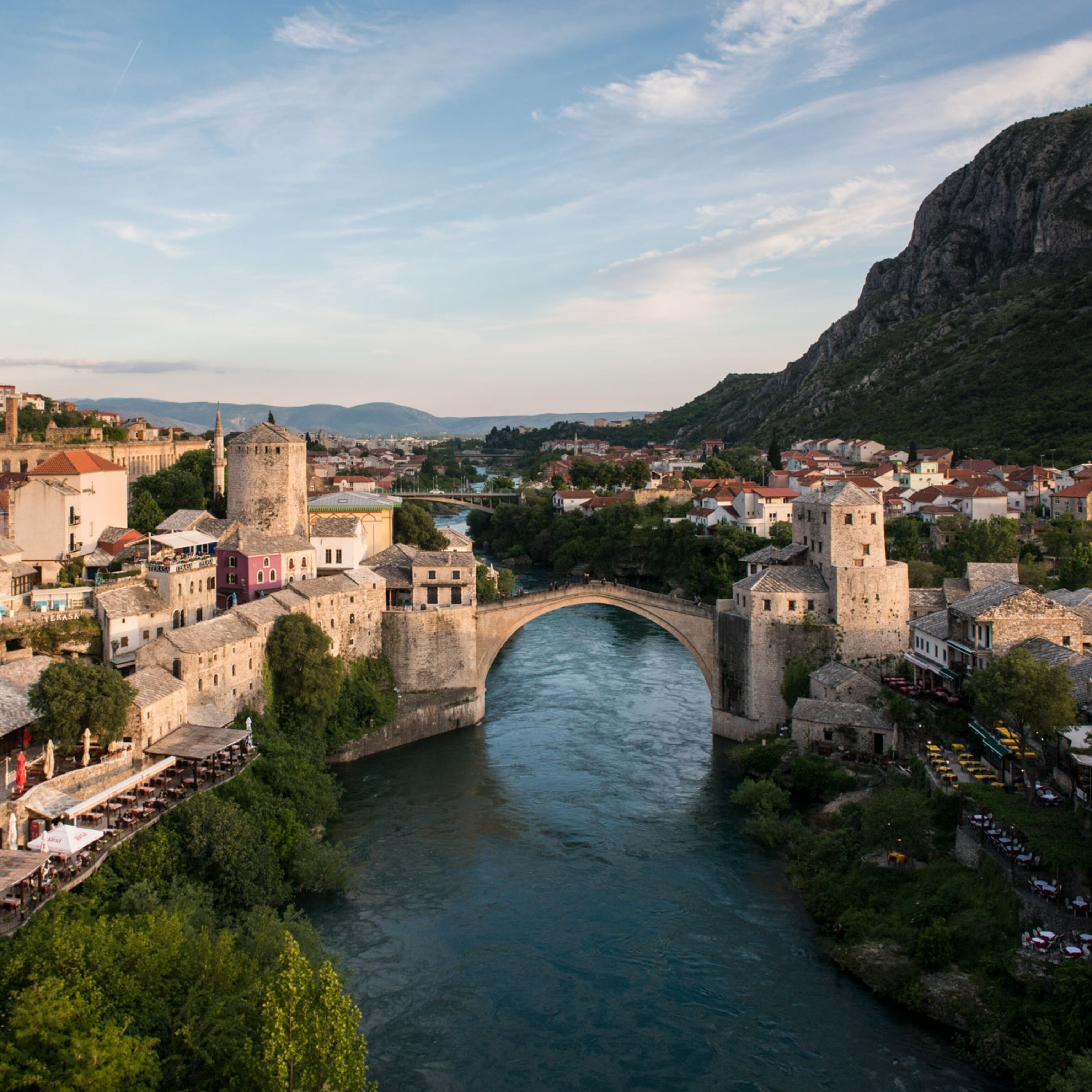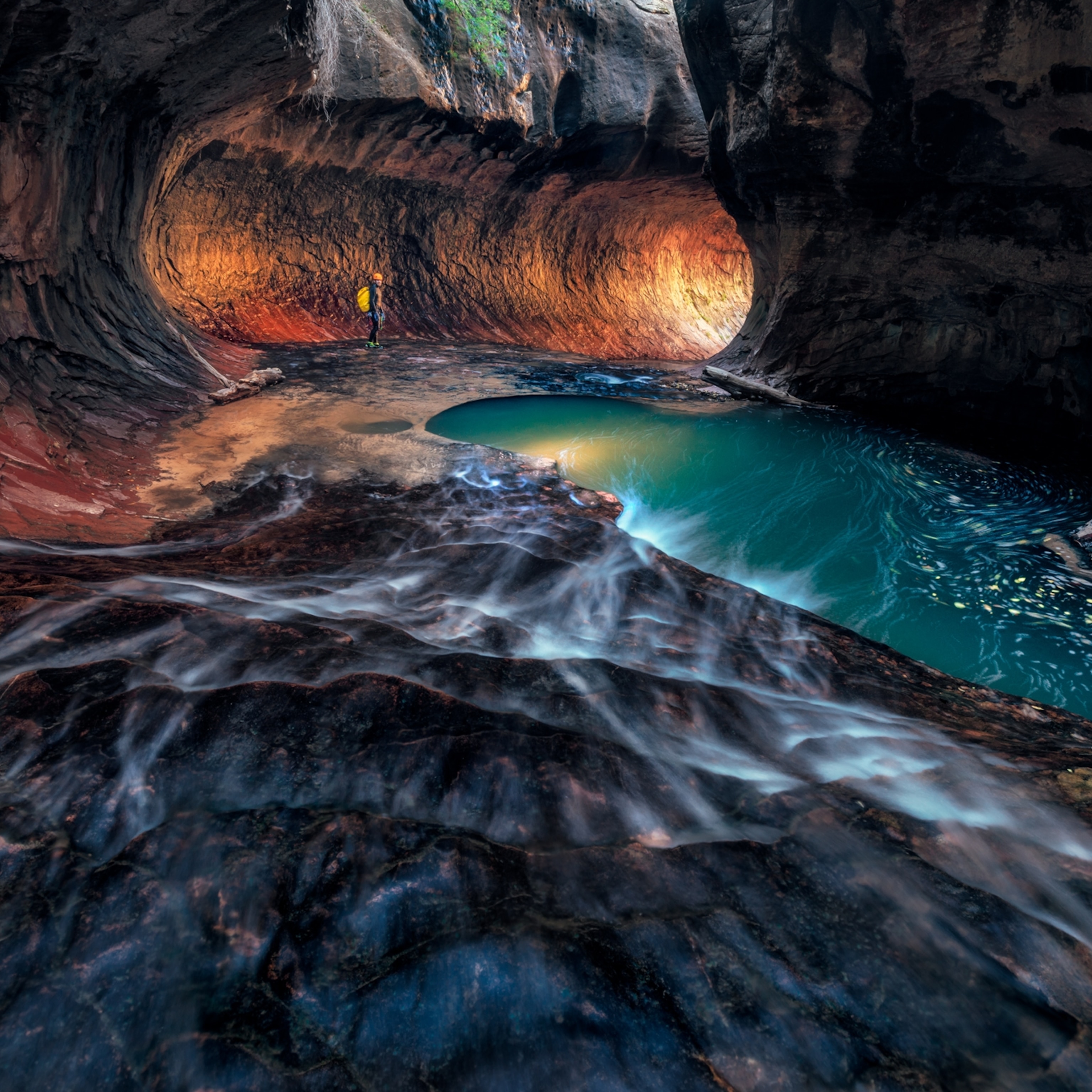Changing the Face of National Parks
From grassroots efforts to new hires and programs at the National Park Service, a growing coalition hopes to get more people outdoors.
Ollie Simmons first met Kieonne Dawson on the uphill leg of California’s Mission Peak trail. “She was looking kind of nervous because the route was so steep,” he remembered of the wet and dreary trek a few years back. Striking up a conversation, the two exchanged numbers, kept in touch and were soon dating.
Mountaintop love stories are rare. And, for a black couple, they’re practically unheard of. While the National Park Service (NPS) turned 100 last year, African Americans still represent only about seven percent of park visitors. In comparison, they make up thirteen percent of the national population. Latinos, Native Americans, and other non-white visitors are similarly underrepresented. The rest—some 78 percent—are white.
“I never had the chance to [hike] until I was grown,” remembers Simmons. Today though, he and Dawson are part of a growing movement to change the relationship that people of color have with the outdoors.
Last year, Dawson helped found the organization H.E.A.T.—Hiking Every Available Trail—which is aimed at encouraging more people of color, especially Africans Americans, to get outside. According to fellow organizer Stan Miles, they usually draw between 50 and 70 people on their Bay Area outings and the group has nearly 3,000 followers on Facebook. Simmons and Dawson—now with their young daughter, Olivia—try to get out at least a few times a month, often as part of a group. Early last June, the family joined an excursion to Muir Woods National Monument.
“Right now, people of color don't get out,” says hike-leader Teresa Baker, who is an affordable housing project manager by day and spends the rest of her time advocating for greater outdoor diversity. That may mean coordinating outings, getting the word out on social media, and spearheading larger initiatives—like this June weekend, which she unofficially designated “African Americans in National Parks Event.”
“We need to be out and walking about and enjoying these spaces like anyone else,” she says.
A Movement Grows
In recent years, there’s been an explosion of groups—from Outdoor Afro to Latino Outdoors—promoting this message. Even the NPS itself has gotten onboard.
“We have a definite diversity issue,” says Michael Reynolds, the former associate director for workforce and inclusion at NPS.
In 2013, the NPS created the Office of Relevancy, Diversity and Inclusion to address the lack of people of color in national parks. “For me, it's more about the culture of the NPS,” says Sangita Chari, the head of the office. “We haven't become relevant to them in their life.”
That disconnect is nothing new, says Baker, after leading the group on the fern creek trail.
“We saw salamanders and we saw deer. And just the beauty of these huge redwoods,” she notes, before explaining that, for many African Americans, the splendor can easily be overshadowed by the past. “These spaces are where a lot of negative things took place.”
While visitors often see national parks as places of serenity, rejuvenation, or adventure, the African-American experience with the outdoors has historically been punctuated by lynchings, flights from slavery and trauma. “[There’s] something in our DNA that gives us a fear,” says one of the roughly two dozen Muir Woods hikers. She hadn’t gotten out into nature much until she was in her sixties. “It just clamps you and grips you.”
This discomfort, coupled with the legacies of exclusion and cultural unfamiliarity, has led a quarter of African Americans and Hispanics to characterize parks as unsafe or unpleasant.
“When you come out of a history of segregation you don't willy-nilly think that you can just go to a place,” says African-American ranger Shelton Johnson, sitting on the floor of Yosemite Valley amidst the shadows of Half Dome and El Capitan. Changing that perception for national parks, he elaborates, is part of the same historical flow that brought about the end of Jim Crow laws or the advent of Black Lives Matter.
“This is an extension of the Civil Rights movement. Pure and simple,” he says. “[Reconnecting with the earth] is basically the last act of what it means to become an American.”
For his part in that process, Johnson draws on the Buffalo Soldiers. The all-black U.S. Army Cavalry Regiments celebrated their 150th anniversary last year, having formed in 1866. By the end of that century many had been moved West and served as America’s first park rangers at Yosemite and Sequoia. Captain Charles Young, the Army’s highest ranking African-American officer, subsequently rose to become superintendent of Sequoia. A detail of Buffalo Soldiers was also assigned to protect Yellowstone.
“As an African American, it gives me a profound sense of rootedness,” Johnson says of the history, which he brings alive in a popular re-enactment for Yosemite’s educational program. “When I talk to African Americans about the Buffalo Soldiers, there's this energy. There's this kind of connection.”
Such inspiration within the NPS is still largely confined to individuals like Johnson. Or Betty Reid Soskin, 95, who is the oldest serving ranger. Her talk about being an African-American factory worker at the Rosie the Riveter WWII Home Front National Historical Park is so popular that it requires tickets.
But efforts to institutionalize diversity are gaining steam. NPS has, for instance, opened a number of new urban and historical sites, which are more frequented by guests of color. Among the most recently designated are the Harriet Tubman Underground Railroad and Charles Young Buffalo Soldiers National Monuments. And, while its employees are still about 83 percent white, the NPS says diversity is on the rise in its youth programs, like ““¡Vamos Verde!,” an initiative aimed at Latino high school students.
A shift is evident outside national parks as well. Last year, the Sierra Club elected its first African-American president and, this spring, hired its first director of diversity, equity, and inclusion. Companies are also supporting initiatives, like the North Face through its Explore Fund. Teresa Baker says she’s also working with Patagonia “on efforts of diversity in outdoor brands.”
The Pace of Progress
One poll, by New America Media, suggests that this trend could become increasingly self-propelled. Of the 900 African Americans, Latinos, and Asian Pacific Americans surveyed, 70 percent said that they already participate in “outdoor activities commonly offered on public land;” challenging the notion that people of color are inherently uninterested in engaging with the outdoors. A potentially more significant hurdle that the report identifies are “erroneous perceptions of the distance and cost of visiting.”
In any case, spreading the outdoor diversity message isn’t easy. “Not everybody feels the same way,” says Carolyn Finney, author of Black Faces, White Spaces: Reimagining the Relationship of African Americans to the Great Outdoors. Conservative talk-radio host Rush Limbaugh personally targeted her, in a mocking segment titled “Trees in America's National Parks Are Racist!” But, Finney says, most pushback is more subtle and that overall, support has far outweighed criticism.
Baker is concerned less about opposition and more about the pace of progress. “Let's move beyond the conversation into action,” she urges, worried that things are moving too slowly.
National Parks, she points out, require congressional approval and, by 2050, white people are set to become a minority in America—necessitating others to take up the conservation mantle.
“In 20 years, when this world looks like me, looks like people of color, and we don't care about these spaces, why not throw a McDonald's up?”
Kionne Dawson says she’s starting to see change. She remembers a previous hike in Muir Woods where she counted only three African Americans over 12 miles, on a crowded holiday weekend. But, now, she says, “[hiking] is becoming cool.”
One of the biggest factors is social media, adds Simmons, especially Facebook, where people post pictures of their adventures. “People get to believe that they can do it too when they see other people like them out in the woods.”
The couple’s hope is that by the time Olivia grows up, those images of outdoor diversity will be the norm rather than the exception. ”We may be raising one of the world's [next great] conservationists,” Dawson ponders, looking at her daughter as the family makes its way out of Muir Woods. “This is our future.”
Related Topics
You May Also Like
Go Further
Animals
- This ‘saber-toothed’ salmon wasn’t quite what we thoughtThis ‘saber-toothed’ salmon wasn’t quite what we thought
- Why this rhino-zebra friendship makes perfect senseWhy this rhino-zebra friendship makes perfect sense
- When did bioluminescence evolve? It’s older than we thought.When did bioluminescence evolve? It’s older than we thought.
- Soy, skim … spider. Are any of these technically milk?Soy, skim … spider. Are any of these technically milk?
- This pristine piece of the Amazon shows nature’s resilienceThis pristine piece of the Amazon shows nature’s resilience
Environment
- This pristine piece of the Amazon shows nature’s resilienceThis pristine piece of the Amazon shows nature’s resilience
- Listen to 30 years of climate change transformed into haunting musicListen to 30 years of climate change transformed into haunting music
- This ancient society tried to stop El Niño—with child sacrificeThis ancient society tried to stop El Niño—with child sacrifice
- U.S. plans to clean its drinking water. What does that mean?U.S. plans to clean its drinking water. What does that mean?
History & Culture
- Meet the original members of the tortured poets departmentMeet the original members of the tortured poets department
- Séances at the White House? Why these first ladies turned to the occultSéances at the White House? Why these first ladies turned to the occult
- Gambling is everywhere now. When is that a problem?Gambling is everywhere now. When is that a problem?
- Beauty is pain—at least it was in 17th-century SpainBeauty is pain—at least it was in 17th-century Spain
- The real spies who inspired ‘The Ministry of Ungentlemanly Warfare’The real spies who inspired ‘The Ministry of Ungentlemanly Warfare’
Science
- Here's how astronomers found one of the rarest phenomenons in spaceHere's how astronomers found one of the rarest phenomenons in space
- Not an extrovert or introvert? There’s a word for that.Not an extrovert or introvert? There’s a word for that.
- NASA has a plan to clean up space junk—but is going green enough?NASA has a plan to clean up space junk—but is going green enough?
- Soy, skim … spider. Are any of these technically milk?Soy, skim … spider. Are any of these technically milk?
- Can aspirin help protect against colorectal cancers?Can aspirin help protect against colorectal cancers?
Travel
- What it's like to hike the Camino del Mayab in MexicoWhat it's like to hike the Camino del Mayab in Mexico
- Is this small English town Yorkshire's culinary capital?Is this small English town Yorkshire's culinary capital?
- This chef is taking Indian cuisine in a bold new directionThis chef is taking Indian cuisine in a bold new direction
- Follow in the footsteps of Robin Hood in Sherwood ForestFollow in the footsteps of Robin Hood in Sherwood Forest







